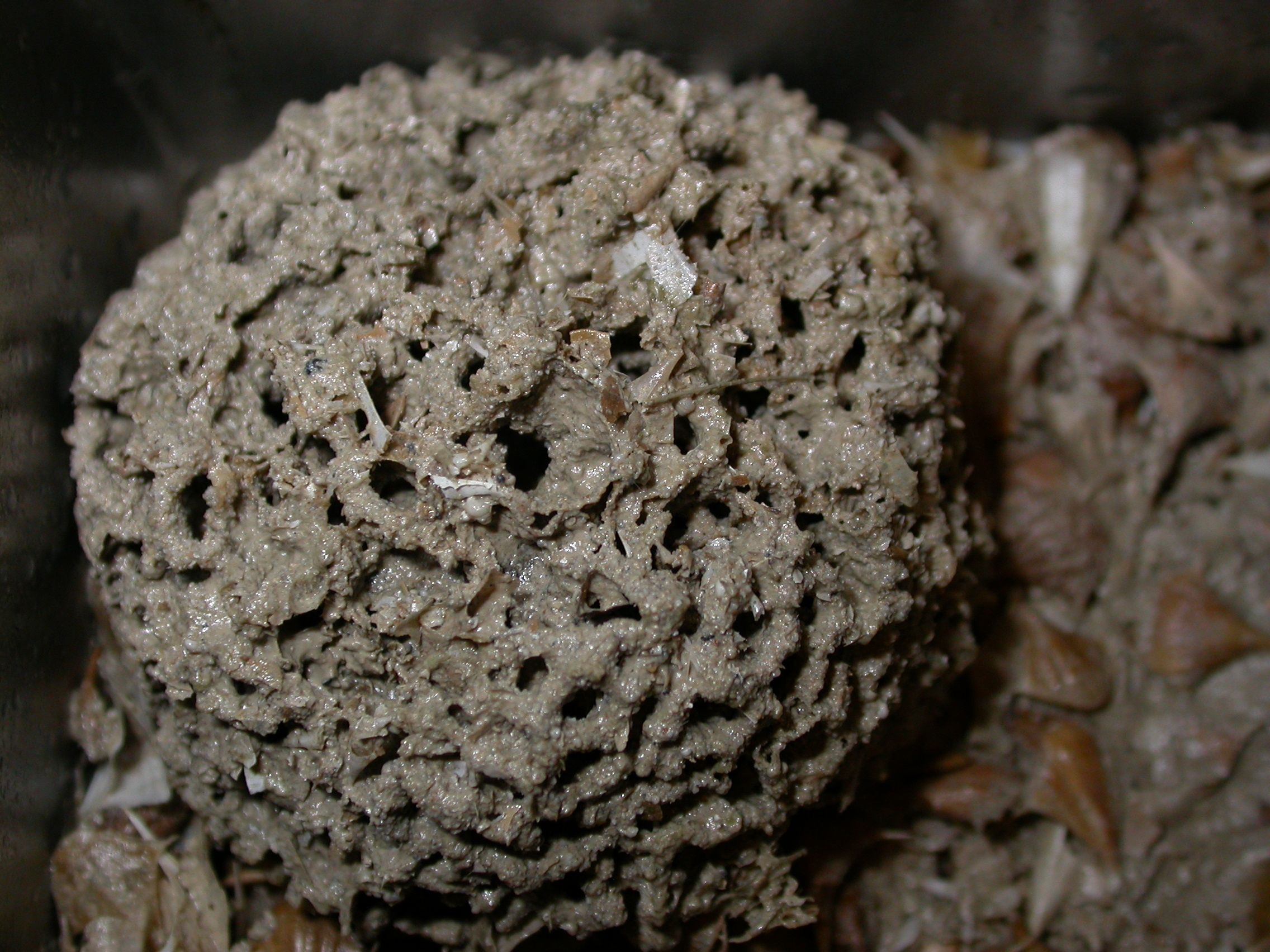Xenophyophore << ZEE noh FY oh fawr >> is a single-celled organism (living thing) found only in the deep sea. It belongs to a group of single-celled organisms called protozoans. Xenophyophores construct a shell, called a test, made of sand particles or smaller shells picked up from the seafloor. These tests vary in shape. They range from spheres, domes, plates, and fans to simple or segmented tubes, branching treelike tubes, or more complex structures. Most species (kinds) of xenophyophores have stiff tests, but some tests are flexible and look like a wet rag. These flexible tests are held together by fibers that are chemically similar to silk. The tests can reach up to 10 inches (25 centimeters) long. Xenophyophore tests are among the largest structures built by a single-celled organism.

Inside the xenophyophore test is the cell body. The cell body forms a system of branching strands that are full of tiny crystals of a mineral called barite. Scientists once thought that these crystals might be secreted by the organism itself. Scientists now think that they are obtained from the surrounding environment. Much of the test is filled with dark masses of waste material produced by the organism. Scientists do not understand the function of the barite or of the dark masses of waste material. Xenophyophores extrude (push out) fine threadlike pseudopodia that extend outside the test. These pseudopodia are likely used to gather food and to build the test. 
Xenophyophores live on the seafloor in most parts of the ocean, from about 1,600 feet (500 meters) deep near New Zealand to almost 36,000 feet (11,000 meters) deep in the western Pacific Ocean. Some attach themselves to rocks and stones. Some xenophyophores live within the bottom sediment. They are particularly common on the tops of submerged volcanoes called seamounts, where currents bring them a steady supply of food.
Scientists know little about the biology of xenophyophores. Scientists believe they cannot move and do not know how long they live. Some species can grow to a large size relatively quickly. They appear to feed on small food particles or bacteria from the sediment or the surrounding water. Mollusks may graze on the surfaces of xenophyophores. Small worms and crustaceans are often found within their tests. They may be feeding on the cell body but are more likely using the test as a shelter or breeding ground.
Xenophyophores are fragile organisms and may be destroyed by human activities, such as deep-sea trawling. This form of fishing involves dragging nets along the sea floor. It catches many bottom-dwelling organisms and damages their habitat.
